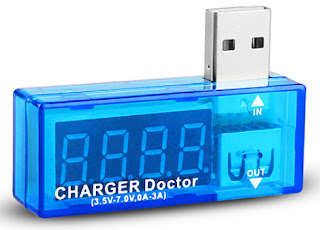I just want to share my recent experience regarding my iPhone charging very slow and how I managed to overcome this problem. I'm not saying this is a permanent solution but this works for me and my phone is doing just fine.
Over a month ago, I observed my iPhone is charging (or recharging) very slow. One night, the remaining charge is around 20% so I plugged it before before going to bed. And to my surprise, it only charged up to around 68% after a good 5-6 hours of sleep. All the while I'm only using the original lightning cable and supplied charger by Apple. If you're an iPhone user, you know how iPhones behave using other chargers and cables.
This is kind of unusual since I've been using my phone for quite a while and I'm used to getting a full charge in an hour or so. My first suspect was the charger so I tried charging it using another apple original charger (and the bigger iPad charger) but still the same results. This started after a recent IOS update so this was another one of my suspect. Is searched online and found no direct connection with other users experiencing the same problem after the latest software update. The least of my suspect was the phone or the internal battery itself (my unit was recently replaced with a brand new unit after the battery of my old unit bulged out forcing the screen to pop out of the case).
To find out what really is the problem, I thought of doing some quantitative troubleshooting . I did this using a simple test and a handy little gadget.
Recently, I got hold of this CHARGER Doctor.
I got this from Concord auto center for around 400Php ($8).Yeah, quite expensive already since you can buy these online for less than $2 but then I don't want the hassle of waiting and all that so I just bought a piece.
This little tool provides a reading of the voltage and current passing through the USB port and the device connected to it. The voltage and current is alternately displayed at around 5 second interval. This will be perfect for the test I have in mind. Looking at the voltage & current readings, I may somehow, get an idea if the problem is the charger, the cable or the phone.
Slow charging maybe a result of abnormal readings based on current & voltage. A high voltage or current reading might mean the protection circuit is just doing it's job thereby preventing a normal charging rate. On the other hand, a low voltage or current might mean there's not enough juice being supplied to the phone and hence, the same result. This, among other factors such as connector losses, poor battery contacts, bad electronic circuitry or just a defective battery might cause charging issues.
And so, after a series of simple tests, I found out the cause of the problem.
Using different chargers, all of them had a stable reading of around 4.9 to 5.1 volts which is the ideal USB voltage supply. But looking at the current reading, the difference is quite significant using different lightning cables (original & aftermarket cables). I only took pictures using my laptop usb just to demonstrate the results.
First test, the original (old) lightning cable.
Voltage reading is around 5.11V (not shown) and the current reading is 0.29A - this is very low, and will cause a very slow charge.
*the cable is so old that the outer plastic layer just flaked off so it is now wrapped with some plastic protective sleeve (purple in color) - apologies for the blurred photo.
*The phone indicates a charging icon during all the test with no cable compatibility errors.
Second test, an original (brand new) cable ,also wrapped in protective sleeve.
Voltage reading is about the same while the current is much better at around 1A. This maybe a bit high but this is normal for iPhones especially if the battery has very little charge left. That is why iPhone charges quite fast since the current is regulated depending on how empty or full is the battery (this will be lower as the battery gains charge).
This rate of current is also within the capacity of the iPhone charger rated at about 1000mA or 1A.
Next test, an aftermarket lightning cable with some fancy flashing LED's.
The current reading is also low and this will not charge your phone properly.
Next, also an aftermarket cable but this one has better results.
Charging at the same rate as the new original cables.
I've been using this cable for quite sometime and this is doing very good job at quickly charging my phone, have no problems using my phone whatsoever.
Conclusion: The problem was the cable.
If you're experiencing the same problem, you might want to use a different cable just to verify if it is good or not. It doesn't matter if it is the original or aftermarket cable. After this experience, I don't mind buying aftermarket cables as long as it's doing it's job. Besides the huge price difference (I got my aftermarket cable for only $2 whereas the original is about $35) the aftermarket is also working fine as a data cable. I won't mind bringing this little gadget when buying a cable since most of the sellers allow you to test the cable before buying it. This also applies when getting a new charger.
If you find this helpful, please let me know in the comments section. You can also support my blog by sharing this to your friends.
'til next time, bye!
P.S.
I might also do the same for Android devices, will post once done. But then, the same principle applies.






No comments:
Post a Comment